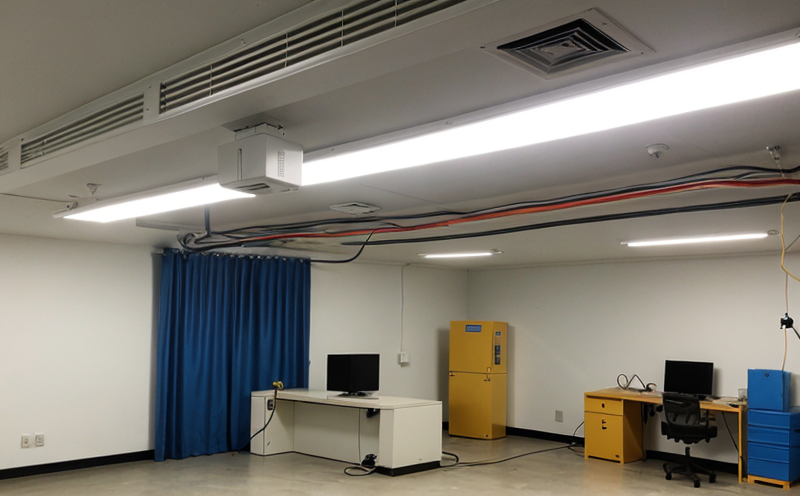ISO 8995-1 Lighting of Work Places
The ISO 8995 series provides a framework for specifying and assessing lighting in workplaces. Specifically, ISO 8995-1:2017, titled "Lighting of Workplaces - Part 1: Assessment," establishes the principles and requirements for evaluating workplace lighting. This standard ensures that workspaces are illuminated to meet safety, health, and performance needs. It is critical in sectors like construction, healthcare, and manufacturing where visual tasks are paramount.
Understanding the standards around lighting design can help avoid issues such as glare, insufficient illumination, or over-illumination, which can impair worker productivity and increase accident risks. Compliance with ISO 8995-1 ensures that workplaces meet international benchmarks for safety and efficiency.
The standard covers various aspects of workplace lighting including:
- Design criteria
- Luminance levels
- Uniformity requirements
- Ergonomics considerations
To meet the requirements, laboratories and testing facilities use sophisticated equipment such as photometers and lux meters. The process involves detailed measurements of light levels in various areas of a workplace to ensure they comply with specified thresholds.
In practice, this means that engineers or technicians may need to conduct multiple tests under different conditions to validate compliance. For instance, the lighting test might be conducted during both day and night shifts to account for variations in natural light. This ensures that all workers are provided with adequate illumination regardless of time of day or task complexity.
The testing procedure typically includes:
- Setting up the testing environment according to ISO 8995-1 requirements
- Measuring illuminance at specified points within the workspace
- Evaluating glare factors and color rendering indices (CRI)
- Documenting findings in a report that aligns with ISO standards
The results of these tests are crucial for stakeholders who need to demonstrate compliance or improve lighting conditions. For example, in the healthcare sector, ensuring proper lighting can enhance patient care and staff comfort.
| Industry Sector | Application Example | ISO Standard |
|---|---|---|
| Healthcare Facilities | Operating rooms and patient wards | ISO 8995-1:2017 |
| Manufacturing Plants | Assembly lines and inspection stations | ISO 8995-1:2017 |
The testing process is not only about meeting regulatory requirements but also about enhancing the overall working environment. Proper lighting can improve concentration, reduce eye strain, and boost employee morale.
Benefits
Compliance with ISO 8995-1 brings numerous benefits to employers, employees, and organizations:
- Enhanced Safety: Proper lighting reduces the risk of accidents by improving visibility in hazardous areas.
- Better Ergonomics: Well-lit workspaces promote comfort and reduce physical strain on workers.
- Increased Productivity: Optimal illumination levels can lead to higher efficiency and better quality output.
- Improved Health: Adequate lighting supports circadian rhythms, which is essential for maintaining mental health.
In addition to these direct benefits, adhering to ISO 8995-1 also contributes positively to a company’s reputation and can lead to cost savings by reducing energy consumption and extending the lifespan of lighting fixtures.
Industry Applications
| Application Area | Description | Key Considerations |
|---|---|---|
| Hospitality | Ensuring guest comfort and safety in hotel corridors and lobbies. | Incorporating mood lighting to enhance ambiance. |
| Transportation | Providing adequate visibility for passengers and staff at airports, train stations, etc. | Focus on glare reduction in bright environments. |
| Education | Maintaining optimal conditions for learning and reducing eye strain among students. | Use of color temperature to support visual development. |
Each industry has unique requirements, but the core principle remains consistent: ensuring that lighting meets specific performance metrics as outlined in ISO 8995-1. By adhering to these standards, organizations can create safer and more efficient environments for all stakeholders.
Environmental and Sustainability Contributions
- Energy Efficiency: Efficient lighting systems reduce energy consumption, thereby lowering carbon footprints.
- Resource Conservation: Properly designed lighting can extend the lifespan of fixtures, reducing waste.
- Sustainable Design: Adherence to ISO standards encourages sustainable practices in workplace design and construction.
By integrating these principles into daily operations, organizations not only comply with international regulations but also contribute positively to global sustainability efforts. This commitment reflects a broader responsibility towards environmental stewardship and can lead to long-term cost savings through reduced utility bills and improved operational efficiency.





